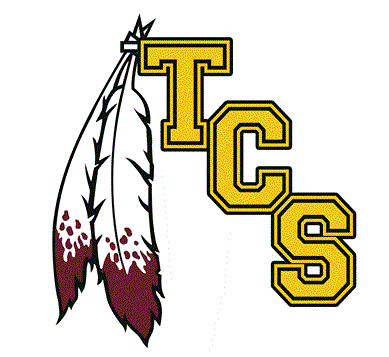About the Company
Our Philosophy
Addressing the educational needs of all TóHajiilee students by integrating all subject areas to provide TóHajiilee students with information, skills and experiences so that they are prepared to live in a multicultural world to become self-directed and productive members of both the Navajo Nation and the United States of America.
Our Goals
The students who attend TóHajiilee Community School will be given opportunities:
- To become literate in Language Arts, Mathematics, Science, Social Studies, and Technology so that they are prepared for continuing educational opportunities, future jobs, and/or careers.
- To understand and further learn about the language and culture, history, and values of the TóHajiilee Community and the Navajo people so that they have knowledge and respect for themselves, their own people and are ready to become contributing members of society.
- To develop life skills such as respect, discipline, physical fitness, social, inquiry, and planning skills so that they will become independent and capable citizens with leadership qualities.
- To learn about similarities and differences among all people in the United States and around the world so that the TóHajiilee students are prepared to live in a global society.
Our Community
TóHajiilee is interpreted in English as “Drawing Water From A Well.” The well is located in the canyon west of the school. The name change from Canoncito to TóHajiilee was initiated by the TóHajiilee Community School students in sponsoring a resolution before the community chapter and people. The Navajo Nation Council was in support of the name change as well as the State of New Mexico to change the signs on the Interstate highway. The community celebrates August 13th as Canoncito Band of Warriors Land Recognition Day. In 1949, President Truman signed the land act bill and became part of the US Canoncito Band Warriors law of the To’Hajiilee land.
Our school was built by Bureau of Indian Affairs in 1935 as Kindergarten to 3rd grade dormitory school. The dorm closed in 1975 and became a day school and expanded the grade levels, K-12. Our school is on the Canoncito Band of Navajos Reservation that is located 8 miles north of Exit 131 off Interstate-40 and 35 miles northwest of Albuquerque, New Mexico USA. Although this area had been occupied by the Canoncito Navajos for many years, this occupation was disrupted in 1863, when the United States government interned many Navajo (Diné) people in southeastern New Mexico. This event is now known as the “Navajo Long Walk” in which many Navajo people suffered and died when they were forced to walk hundreds of miles to Fort Sumner, New Mexico. This interment lasted 5 years and the Navajos were then allowed to return to their homes. The Canoncito Navajos did not go with the other Navajo groups, but chose to return to their won homeland in Canoncito, because they did not sign a treaty with the U.S. government. They did not have a treaty to protect their rights and land.
In the early 1990’s, Canoncito was placed under the jurisdiction of the Bureau of Indian Affairs. The Navajo Nation established Canoncito as a Chapter group in the 1920’s. Land was set aside for the Canoncito Navajos by an act of Congress in 1925. Public Law 68-550 allowed for 40 acres to be allotted to Canoncito. Canoncito began to send delegates to the Navajo Tribal Council in 1939. TóHajiilee – “the place where water is drawn”: is now the name of the community and our school. TóHajiilee serves all Navajo students from this community of 2,500 people. Collaborative programs that serve our students are located on our school campus or in the community. Ancillary staff from the BIE Special Education department serve all of our Special Education students in grades K-12. The University of New Mexico Health Department sponsors a Teen Center on our campus. The To’Hajiilee Probation Officer also has an office on our campus.
Cultural Awareness and Sensitivity
The majority of students we serve at TóHajiilee Community School are Navajo students who are fluent in their Dine Language and/or practice their traditional Navajo values and customs. Therefore, as employees of the TóHajiilee Community School Board of Education, Inc. we are here to proudly serve our students and their families by including the Dine Language and Culture in their daily academic success.
As colleagues of the TóHajiilee Community School, we need to be culturally sensitive and have cultural awareness of our Navajo Community. Below are some cultural considerations you may need to be aware of:
- Energy is given from the four sacred mountains.
- Ke’ Kinship is taught at a young age. Kinship is about family relationships and respect.
- Clanship is determined through the parent’s clan, determines marriages, and important to use when you greet someone else.
- Diné Language is imperative and taught as main curriculum.
- Children are protected from certain animal concepts (Diné people do not associate with certain animal concepts…i.e. coyote, reptiles, owls).
- Diné Art includes weaving, jewelry making, sand painting, pottery, etc.
- Diné people are enriched and practice in various ceremonies and rituals.
- Creation stories and legends are shared among the Diné people.
- Seasonal stories and events are practiced throughout the year.
- Daily Announcements will be done in Dine Language and culturally appropriate.
- A Hogan is a sacred home for the Diné people made of wood poles, mud, and tree bark. The doorway always faces the east, for good blessings and the morning sun.
- Be aware, there are additional cultural awareness and sensitivity of…these are but a few. We will provide you with all culture training.
- Navajo Culture walks in Beauty.


Share
Facebook
X
LinkedIn
Telegram
Tumblr
WhatsApp
VK
Mail